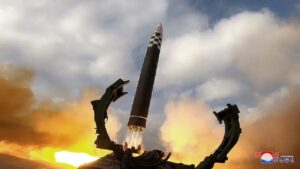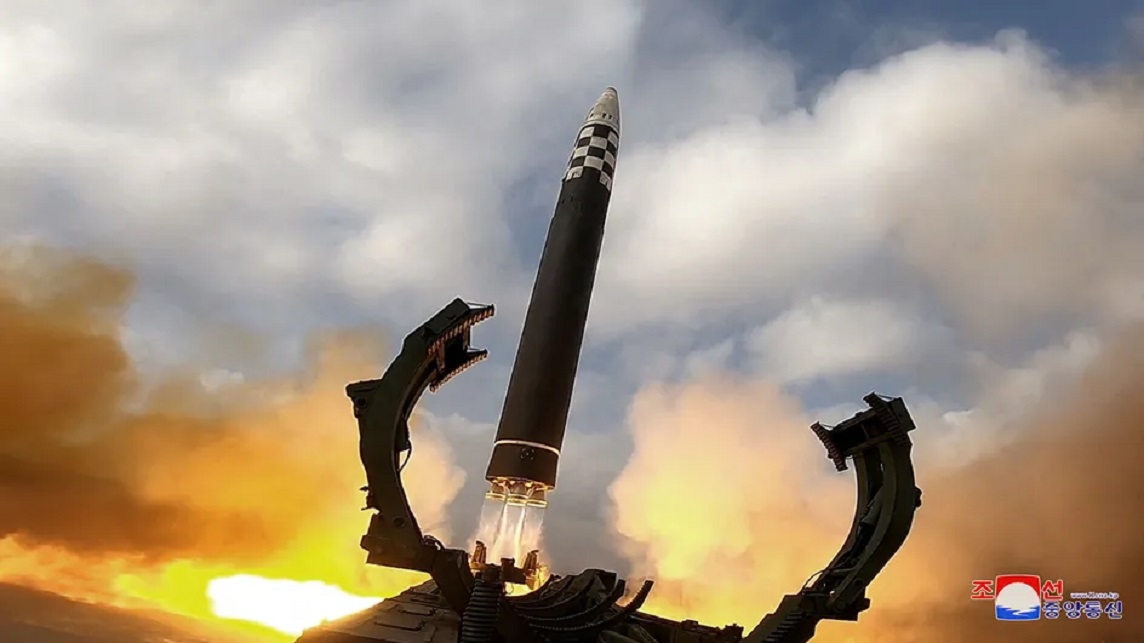New outbreak of fever on the Korean peninsula: Seoul fears a nuclear strike by its northern neighbor and is preparing for it, with the help of the United States.
 Launch of North Korea’s new intercontinental ballistic missile, November 18, 2022. (AFP)
Launch of North Korea’s new intercontinental ballistic missile, November 18, 2022. (AFP)
It is the latest shock statements from Pyongyang that have brutally raised the temperature. Sunday January 2, during the meeting of his party, Kim Jong-un announces that for its security, North Korea will “massively strengthen its military force” and increase “exponentially” its nuclear arsenal. He explains that the country will launch a new intercontinental ballistic missile (ICBM) system, whose main mission will be a rapid nuclear counterattack.
“We prepare ourselves”
Beyond words, there are actions. For the past year, North Korea has been increasing ballistic tests, almost one shot per month – some of which gave Seoul a cold sweat and 2023 promises to be in the same vein. Washington and Seoul consider the situation “very worrying” and the escalation that began several months ago does not seem about to stop.
South Korea does not have atomic weapons: it is under “the American umbrella”, it is the United States which ensures its security. In its “nuclear posture”, the document which sets the rules for the use of atomic weapons, the Pentagon states very clearly that “any nuclear attack by North Korea against the United States or its allies and partners would be unacceptable and would result in the end of the regime”.
Hence this deterrent statement from a spokesperson for the White House National Security Council to defend his ally against threats from the north, explaining that the allies are preparing “a coordinated and concrete response to a series of scenarios, including the use of nuclear weapons by North Korea”. Concretely, this does not mean that there will be nuclear warheads on the territory of the peninsula, but information sharing, a simulation exercise of conventional response. More than 28,000 American soldiers are stationed in South Korea.
The very offensive South Korean president
The South Korean president would like to go further: he calls for joint nuclear exercises, without however acquiring atomic weapons, on this point the official doctrine of South Korea has not changed (even if public opinion public is more and more favorable to it). Exercises would already allow you to show your muscles even more in the face of the rise in power of the North Korean military arsenal. For the moment Washington has not responded favorably.
Since coming to power last May, Yoon Seok Yeol has been in a very offensive posture. With him there is no question of diplomatic openness as with his predecessor. He plans to label North Korea an “enemy country” in the next national security white paper. And the icing on the cake, this Wednesday, January 4, he even says he is considering suspending an agreement concluded in 2018 with Pyongyang if North Korea ever sends drones to South Korean territory again as it did at the end of December. The anti-aircraft defense had not been able to shoot down a single aircraft… This kind of talk can only fuel tensions.














































